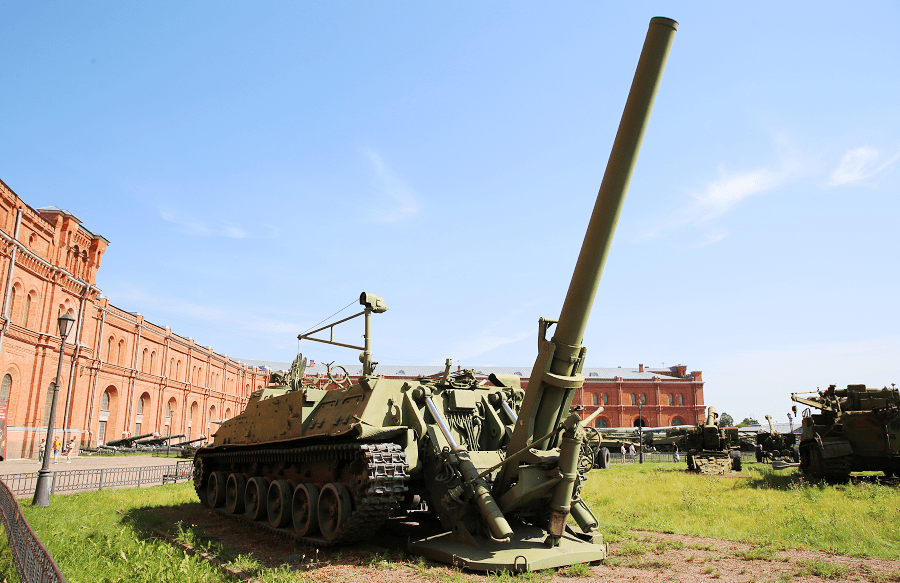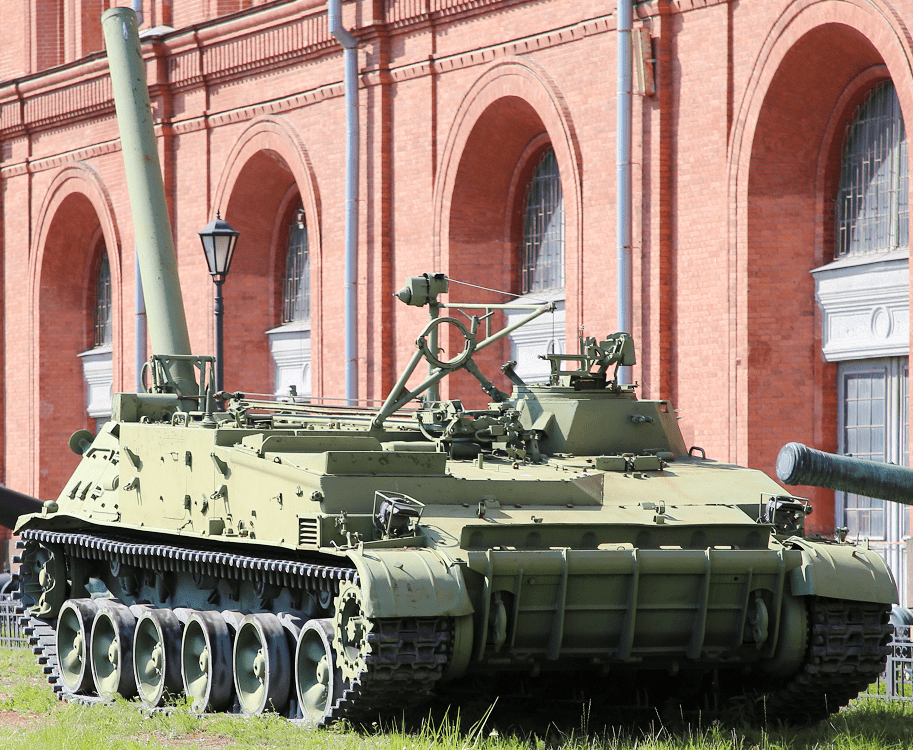2S4 Tyulpan (or Tulpan (“tulip”), Russian: 2С4 «Тюльпан») obyekt 305

2S4 Tulpan. Vadim Zadorozhny’s Museum of Equipment (Moscow)
Following World War II, the Soviet Union developed two types of heavy infantry mortar in 160 and 240 mm calibres, both conventional albeit breech-loaded designs. Due to their relatively large dimensions, total mass and the heavy weight of their projectiles (and the M-240 in particular), these mortars could hardly hope to function in the field as infantry weapons, losing the features making such weapons desirable, that is their relatively simple operation, speed of deployment and mobility.
To alleviate the obvious mobility concerns, the military leadership proposed to mount the heavy mortar on a self-propelled, tracked chassis with the guns installed externally on the chassis, rather than in an enclosed superstructure or turret. For firing, the gun was to be pivoted at the vehicle’s rear and anchored in the ground with the use of a massive recoil-absorbing base plate. Such a solution would help to simplify the overall design and construction of the vehicle and allow for a smaller, lighter prime mover. Initially, designers planned to utilize a common chassis used in the 2S1 Gvozdika self-propelled howitzer, but quickly found it was not robust enough to handle the significant recoil (approximately 400 tonne-force).
Development bureau: SKB-172 (Perm, USSR)
Assembly: Uraltransmash (Yekaterinburg, USSR)
Years of production: 1969—1998
Issued: 588 items
Crew: 5
Engine: V-59U (V12; 38 880 cc)
Power: 520 HP
Speed: 63 km/h
Fuel consumption: 199 l/100 km
Rate of fire: 1 rpm
Fire range: 19,690 m
Weight: 27 t
Armament: mortar 2B8 (240 mm)












